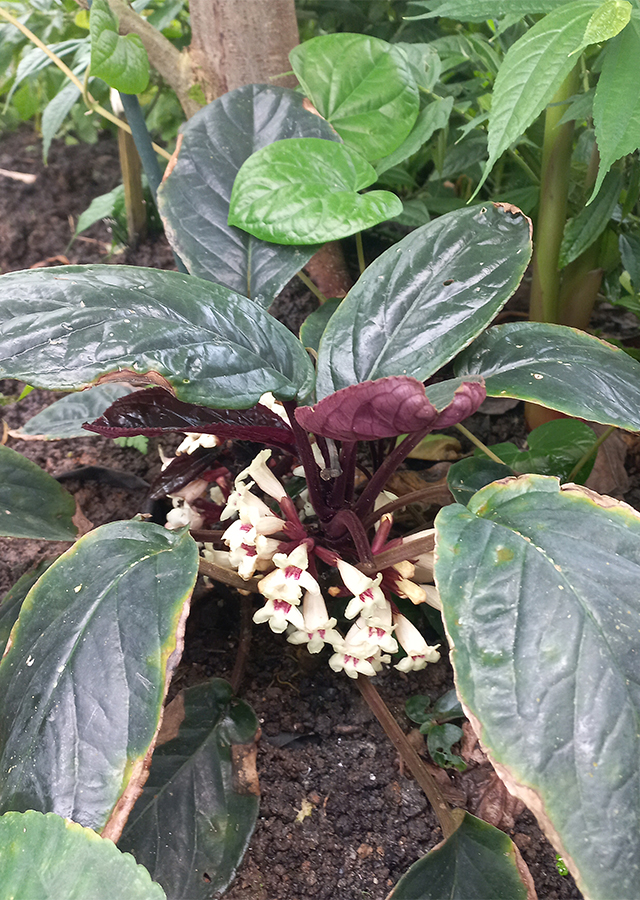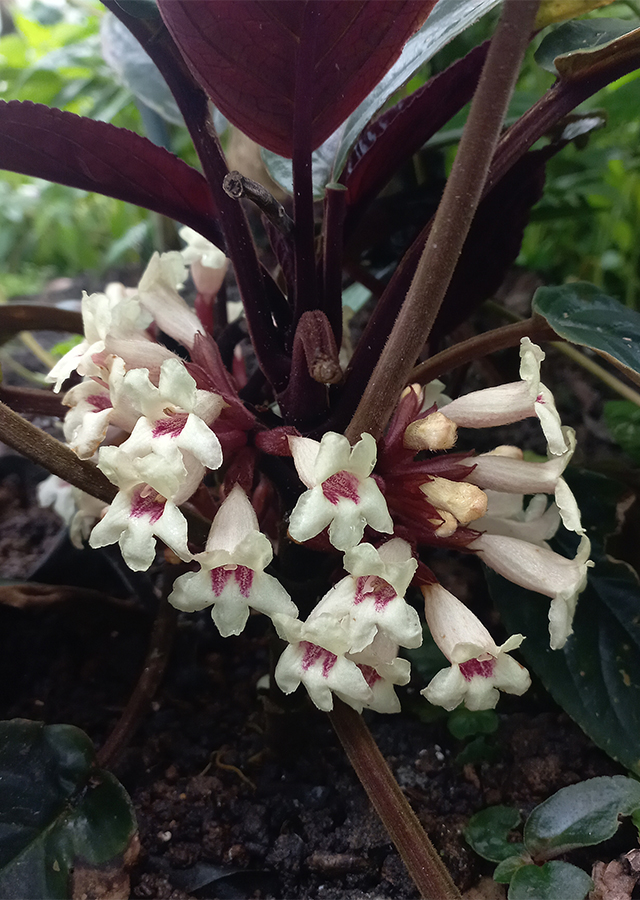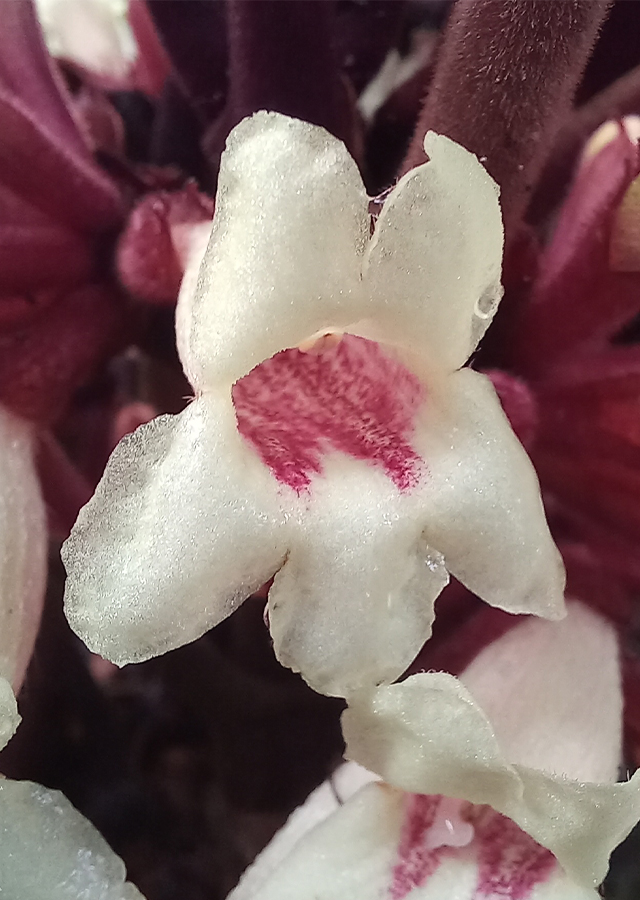Drymonia Turrialvae
Drymonia turrialvae Hanst
Gesneriaceae
Location in our garden
Green House



Synonym
Drymonia marmorata Van Geert
Habitus
Herbaceous. An epiphytic herb or low perennial shrub that grows 0.15-0.6 m tall
Part Used
Leaves
Growing Requirements
Need Shade
Habitat
Forest
Overview
Drymonia turrialvae is native to Colombia, Costa Rica, Ecuador, Nicaragua, and Panamá, and it is distributed to other tropicals areas. Especially in Sumatra, we can found it in Karo District. It is on of the ingredients of traditional therapy oil that known as Minyak Karo (Karonese Oil). In Panama it is used medically by Guarmi people.
Vernacular Names
No found data on this. Need further research.
Agroecology
Grows in shady forests with an altitude of 1,360 m, in wet and cool areas.
Morphology
- Stems - succulent, quadrangular, stout, red to purple, becoming pale brown, strigillose to glabrous, unbranched.
- Leaves - equal in a pair, fleshy, ovate to suborbicular, large, 8.7-29.5 cm long, 3.9-25.4 cm wide, membranous when dry, the apex acuminate to cuspidate or rounded, the base rounded or cordate, crenulate to subentire, above bullate, glossy dark green, glabrous, the veins sunken, below pink to red or purple, puberulent at least on the veins to glabrous, the veins prominent; petioles often long, stout, sometimes scaly, 2.3-21.7 cm long, 2-6 mm wide, purplish.
- Flower - inflorescences in the upper axils, flowers many in congested racemes; peduncles ascending, short, red; bracts oblong, red purple, puberulent; pedicels to 4 cm long, red purple, glabrescent. Flowers showy; calyx lobes ovate, shiny, red purple, 1-3 cm long, puberulent, entire or inconspicuously toothed; corolla lilac, pink, cream, light yellow or white with yellow on the limb, the tube horizontal in the calyx, saccate at the base, puberulent, broader toward the throat and not contracted above, waxy, to 6 cm long, the limb bilabiate, the lobes rounded, the lower lobe larger and fimbriate; stamens included, the filaments shortly adnate to the base of the corolla tube, flattened; ovary reddish, glabrous, the style yellow, puberulent; style scoop shaped.
- Fruit - a fleshy berry, oblate or globose, lavender, blue, pink, red to purple, 1 cm in diameter.
- Seeds - fusiform, reddish, striate.
Cultivation
This species is generatively propagated by seed.
Chemical Constituents
Flavonoids, cinnamic acid, anthocyanin.
Traditional Medicinal Uses
It is used to treat aches, colds, wounds, dry and treat skin burns, strengthen bones in infants, and to treat fractures.
Part Used
Reference Sources
- Kew Royal Botanic Gardens. 2021. Plants of the World Online: Drymonia turrialvae Hanst.. https://powo.science.kew.org/taxon/urn:lsid:ipni.org:names:380750-1.
- Missouri Botanical Garden. 2016. Drymonia turrialvae Hanst. http://legacy.tropicos.org/NamePage.aspx?nameid=14000564&projectid=66&langid=10.
- Felipe Passero, Erika Dos Santos Brunelli, Thamara Sauini. T, Thais Fernanda Amorim Pavani. The Potential of Traditional Knowledge to Develop Effective Medicines for the Treatment of Leishmaniasis. June 2021. Frontiers in Pharmacology 12. DOI:10.3389/fphar.2021.690432. https://www.researchgate.net/publication/352221292_The_Potential_of_Traditional_Knowledge_to_Develop_Effective_Medicines_for_the_Treatment_of_Leishmaniasis.
- ANDERS S. BARFOD and LARS PETER KVST. 1996. Comparative Ethnobotanical Studies of the Amerindian Groups in Coastal Ecuador. https://gesneriads.info/wp-content/uploads/2020/02/comparative-ethnobotanical-studies-391_Barfod-Anders-S.-and-Kvist-Lars-Peter.pdf.

